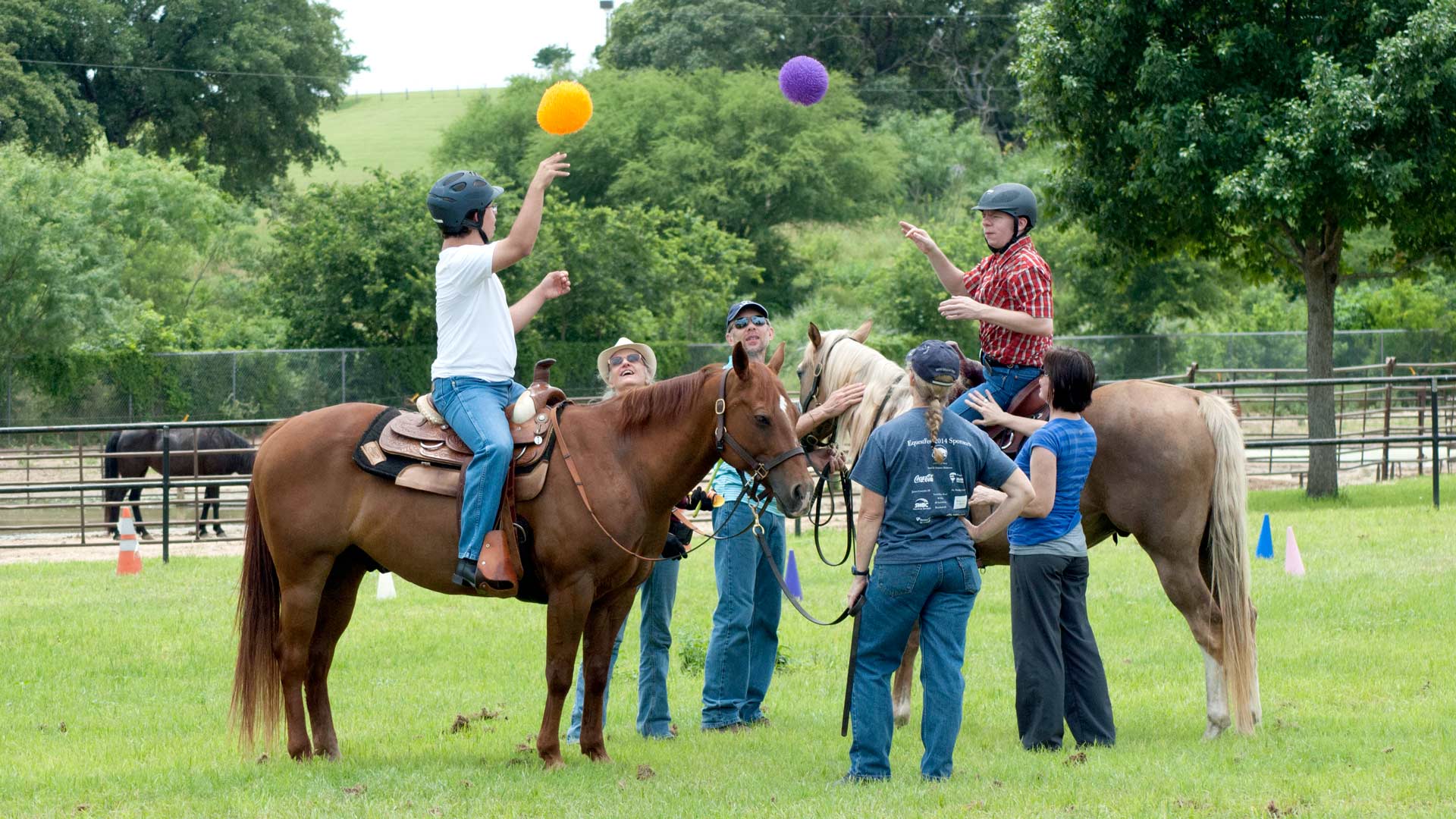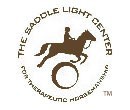We offer two types of therapy: Therapeutic Riding and Hippotherapy. The utilization of the horse and related exercises may seem similar, but their focuses and objectives are radically different.
Therapeutic Riding
The objective of Therapeutic Riding is to improve riding skills for disabled persons; this can be achieved through stretches, exercises and balance activities.
More about Therapeutic Riding
- Adapted recreational horseback riding lessons.
- Therapeutic riding is recreational horseback riding lessons adapted to individuals with disabilities.
- It is completed by a certified therapeutic horseback riding instructor in conjunction with volunteers.
- In Therapeutic Riding, the individual is often taught riding lessons in a group format, which runs in “sessions.” The instructor must respond to the group as a whole, in addition to fostering individual success.
- There is occasional hands-on assistance by the riding instructor and/or volunteers, but the instructor usually teaches from the center of the arena.
- Horse used for Therapeutic Riding instruction have been screened to make sure they have the appropriate temperament for this job.
- In Therapeutic Riding, the emphasis is on proper riding position and reining skills, not functional therapeutic goals.
- Because Therapeutic Riding is an adaptive/recreational sport/activity, it is not covered by insurance.
Hippotherapy
Hippotherapy seeks to decrease spasticity through positioning and weight bearing, increase range of motion, strength and endurance, and improve balance, mobility, head and trunk control.
More about Hippotherapy
- Physical, Occupational or Speech Therapy. The movement of the horse is a treatment tool
- Hippotherapy is not a horseback riding lesson; it is a physical, occupational or speech therapy, which is approved by a physician and implmented by a team that includes a licensed, credentialed therapist.
- Hippotherapy is implemented by a professional therapist (occupational therapist, physical therapist or speech language pathologist), in conjunction with a competent horse handler and a specially screen and trained therapy horse.
- There is direct, hands-on, participation by the therapist at all times.
- The horse’s movement is essential to assist in meeting therapy goals.
- The horse’s movement stimulates the rider’s muscles to improve posture and trunk control. The vestibular stimulation derived from riding promotes better balance and combined with input from muscles, tendons and joints, improves the rider’s sensory integration and organization. Constant adaptation to the horse’s speed, length of stride and the persistent need to adjust to gravitational and centripetal forces, helps the rider develop better balance, midline orientation and righting reactions.
History of Therapeutic Riding
Hippotherapy consists of the words meaning “horse” “hippos”, and “treatment” “therapy” in ancient Greek. It has two distinct sectors in its history, before 1900 and after. It was first mentioned between 460 – 377 B.C. by Hippocrates in ancient Greece in a chapter on “Natural Exercise” which mentions horseback riding. We then see it mention in 1569 by Merkurialis of Italy, when he wrote on “The Art of Gymnastics” mentioning the horse and rider. From there, Tissot of France mentions riding at the walk as the most beneficial gait in his book, “Medical and Surgical Gymnastics”. Tissot was also the first to describe the effects of too much riding as well as contraindications.
Despite these early works, Hippotherapy did not become a discipline with an established protocol until the 1960s. During the 1960s, therapeutic riding centers began to develop throughout Europe, Canada and the U.S.. At the same time, we saw Hippotherapy beginning to be used as an adjunct to traditional physical therapy in Germany, Austria, and Sweden. During the 1970s, in the United States, physical therapists began to develop treatment uses for the movement of the horse.
Spring forward to 1987, a group of 18 Canadian and American therapists traveled to Germany in order to study hippotherapy and began developing standardized Hippotherapy curriculum. Further development of standardized curricula on Hippotherapy took place from 1988 to 1992 when we see the formation of the American Hippotherapy Association (AHA). AHA was established as an official and international protocol and was recognized as the first Section of the North American Riding for the Handicapped Association (NAHRA). In 1994, AHA established therapist registration and set standards of practice for Hippotherapy and in 1999 the first certification examination was realized.




